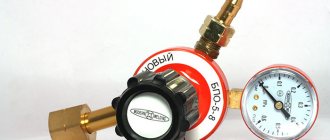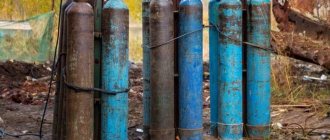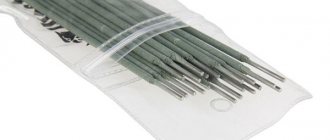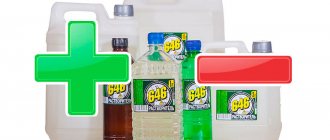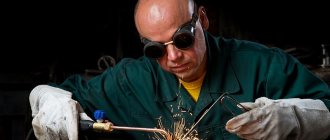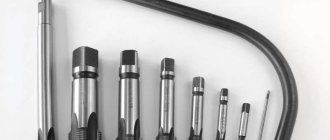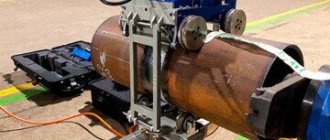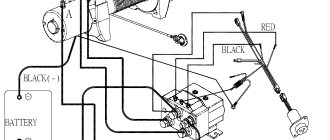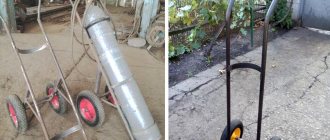A fire, accompanied by explosions and scattering of metal parts/fragments, in a warehouse or liquefied gas storage base is little worse than the same disaster in ammunition storage areas.
Therefore, the rules for storing gas cylinders (hereinafter referred to as PCGB) are very strict and do not imply any ambiguity; after all, there is too great a chance that fires/explosions at refueling, repair, and storage facilities for such industrial/domestic tanks/containers will lead to casualties.
An employee should not start work in case of the following violations of labor protection requirements:
- violation of the integrity of the gas cylinder (presence of cracks or dents), as well as the absence of a stamp on the gas cylinder with the date of its test;
- malfunction of the gas reducer (leakage of the reducer union nut, damage to the reducer housing, etc.);
- malfunction of the pressure gauge on the gearbox (absence of a stamp indicating annual testing or untimely carrying out of regular tests, broken
- glass or housing, pointer immobility when gas is supplied to the gearbox, damage to the housing);
- insufficient lighting of the workplace and approaches to it;
- lack of exhaust ventilation when working in enclosed spaces;
- presence of explosive and fire hazardous materials in the work area;
- malfunctions of tools, equipment, devices.
- Storage rules (requirements for warehouses/cabinets): Gas cylinders should be stored in one-story warehouses with light coatings, equipped with ventilation, without attics. Warehouse walls must be made of non-combustible materials; Windows and doors must open outwards. The height of the warehouse must be at least 3.25 m; lighting must be explosion-proof.
- Floors in warehouses must be made of materials that prevent sparking when metal objects hit them. Floors must be laid at least 0.1 m from ground level.
- Acetylene, oxygen and liquefied gas cylinders must be stored separately. The cylinders are installed in a vertical position with caps and plugs screwed on the valve fittings.
- Cylinders must be firmly secured with clamps or chains and protected from sunlight and exposure to heating devices and devices.
- Gas cylinders installed indoors should be placed at a distance of at least 1 m from the heating radiator and at least 5 m from a heat source with an open fire.
- When installing a screen that protects the cylinders from heating, the distance between the cylinder and the heating device can be reduced to 0.5 m. The distance between the cylinders and the safety screen must be at least 10 cm.
- When working in an open area on a sunny day, cover the cylinders with a piece of tarpaulin.
- Cylinders near the walls of buildings must be installed at a distance of at least 0.5 m from the doors and windows of the first floor and 3 m from the windows and doors of the basement and basement floors, as well as sewer wells and cesspools.
- It is not allowed to place gas cylinders near emergency (fire) exits from premises, on the side of the main facades of buildings, or in passageways with heavy traffic.
- It is prohibited to store flammable materials and carry out work involving the use of open fire (forging, welding, soldering, etc.) within a radius of closer than 25 m from the cylinder warehouse.
- It is prohibited to operate gas cylinders whose inspection period has expired, or if they have external damage (cracks, body corrosion, noticeable changes in shape, etc.), faulty valves, or adapters.
- Rejected cylinders must be labeled “Reject”; The threads of such cylinders must be marked with notches to prevent further use.
- It is prohibited to heat cylinders to increase pressure.
- Transportation: Transportation of gas-filled cylinders must be carried out on spring transport or trucks in a horizontal position with the obligatory installation of gaskets (wooden blocks, rubber or rope rings, etc.) between the cylinders.
- How many oxygen cylinders can be transported: The combined transportation of oxygen cylinders and cylinders with flammable gases, both filled and empty, on all types of transport (and in a passenger car) is prohibited, with the exception of the delivery of 2 cylinders on a special hand trolley to the workplace.
- Transportation without permission: Cylinders must be transported on specially designed carts, containers and other devices that ensure the stable position of the cylinders. Carrying cylinders on arms or shoulders is not allowed.
- Cylinders can be transported indoors by tilting them in a slightly inclined position.
- It is necessary to securely strengthen the cylinders and install them in such a way that there is no possibility of impacts or objects falling on them from above, or contact with the oxygen cylinder, reducer and hoses of fats and oils.
- It is prohibited to remove the cylinder cap using a hammer, chisel or other tool that may cause a spark. If the cap cannot be removed, the cylinder should be replaced.
- When using cylinders, it is prohibited to remove the gas completely contained in them. The residual gas pressure in the cylinder must be at least 0.05 MPa (0.5 kgf/sq. cm).
- When carrying out welding work on a construction site, connecting the oxygen reducer to the cylinder should be done with a special key; Tightening the union nut of the gearbox with the cylinder valve open is prohibited.
- During work, there should be no more than two cylinders at the welding station at the same time - with oxygen and flammable gas.
- If the pressure in the cylinders is higher than permissible, it is necessary to briefly open the valve to release part of the gas into the atmosphere or cool the cylinder with cold water in order to reduce the pressure. When releasing gas from a cylinder or purging a valve or burner, the worker must be on the side opposite to the direction of gas release.
- The release of gases from cylinders into containers with lower operating pressure should be done through a reducer designed for this gas.
- When performing work in winter, if the valve on the cylinder freezes, it should be heated only with hot water.
Storage of gas cylinders at the dacha
Many Russians prefer to spend their summer outside the city. At dachas, gas containers are needed for cooking. And now the end of the season has come, it’s time to prepare the tank for proper “wintering”.
- Be sure to completely disconnect the cylinder from the power source.
- Close the valve securely and use soapy water to check for leaks.
- Take care to protect the container from the sun and high humidity. By the way, most summer residents believe that it is best to store the cylinder in the cellar, where it has the most optimal “wintering” environment. Some people prefer to reduce humidity levels by using silica gel packs.
Gas cylinder: winter storage
I would like to say a few words separately about the above-mentioned time of year. By the way, according to statistics, this is the most dangerous period when many explosions are recorded. Many people make the fatal mistake of bringing the cylinder from cold to warm. The gas expands when heated and ruptures the tank, with all the ensuing consequences.
How to store a gas cylinder in summer
Almost the opposite situation. In general, it is enough to follow the general rules. The main thing is to provide protection from direct exposure to ultraviolet radiation on the tank. And do not forget about the expansion of matter during temperature changes.
Upon completion of work you must:
× tidy up the workplace. Make sure that after work there are no smoldering objects left (rags, insulating material, etc.), and if there is smoldering, fill them with water;
× remove gas cylinders, hoses and other equipment to their designated places. In this case, you must make sure that the valves on the cylinders are closed and the gas is released from the hoses.
× Report any malfunctions noticed during work to your immediate supervisor.
What is worth knowing about acetylene?
Acetylene is an unsaturated hydrocarbon.
This colorless gas was discovered by the Englishman E. Devy at the beginning of the 19th century. The Frenchman M. Berthelot began synthesizing the substance at the end of the 19th century. According to the latest data, this hydrocarbon was discovered on Neptune and Uranus. It is worth noting that under certain conditions acetylene becomes explosive:
- temperature more than 450°C and pressure about 200 kPa;
- prolonged contact with copper or silver leads to an explosion upon impact or a slight increase in temperature.
It is known that during the explosion of 1 kg of a substance, the amount of heat released exceeds 1.5–2 times the amount of heat that would arise when using TNT or nitroglycerin.
Distance between propane and oxygen cylinders:
At the work site, acetylene and propane cylinders must be positioned vertically and firmly secured.
The distance between the oxygen cylinder and the flammable gas cylinder must be at least 5 m, except in cases where the oxygen cylinder and the flammable gas cylinder are located on the same specially designed trolley, and the cylinders must be secured so as to prevent them from hitting each other friend or fall.
Cylinders with liquefied gas and oxygen must be installed at a distance of at least 10 m from the place of hot work, sources of open fire and highly heated objects.
Post Views: 10,299
Storage of gas cylinders on a construction site
Only trained people are allowed to work with explosive containers. In the construction industry, the “unique” rules are more related to their transportation. The fact is that there are a lot of relief irregularities and other nuances!
- Cylinders may only be carried on specially equipped stretchers or carts. This also applies to empty ones!
- Be sure to follow all safety measures to prevent mechanical damage to the tanks.
- Do not forget about the presence of special protective caps on gas containers.
- Mobile infrared radiation installations with gas burners can be installed so that there are no heating devices within a radius of 150 centimeters. And at least a meter from switches, sockets and any electrical appliances.
I. General provisions.
1.1. This instruction defines the basic requirements for the operation, storage and transportation of oxygen cylinders used at the enterprise.
1.2. The instructions were compiled on the basis of the requirements of the “Rules for the design and safe operation of pressure vessels”, approved on October 18, 1994, by the Gosnadzorohrantruda Committee, “Rules for the transportation by road of inert gases and oxygen, compressed and liquid”, as well as other regulatory documents.
1.3. The requirements of these instructions apply to cylinders with a capacity of 40 liters intended for storing and transporting oxygen.
1.4. Work related to the operation, transportation and storage of oxygen cylinders is permitted to persons at least 18 years of age who have undergone a medical examination, special training, passed a knowledge test in the scope of these instructions and have an appropriate entry in the knowledge test certificate.
1.5. Periodic testing of the knowledge of personnel involved in the operation and storage of oxygen cylinders is carried out at least once a year.
1.6. An extraordinary knowledge test is carried out in the event of changes in the requirements of this instruction, their violation, at the request of representatives of the State Supervision Authority for Labor Supervision or persons responsible for supervising the technical condition and operation of cylinders assigned in each division of the enterprise from among the engineering and technical personnel.
1.7. Personnel involved in work related to the operation and storage of oxygen cylinders undergo repeated occupational safety training at least once a month in accordance with the requirements of these instructions.
1.8. Personnel's permission to independently service oxygen cylinders is documented in an administrative document for the enterprise.
1.9. Issuance by officials of instructions or orders that contradict the requirements of the above rules and these instructions is not permissible.
1.10. The requirements of this instruction are mandatory for all employees of the enterprise involved in the operation, storage and transportation of oxygen cylinders.
1.11. Employees who violate the requirements of these instructions bear personal responsibility, regardless of whether the violation led to accidents or accidents to people. Officials are also responsible for violations of the requirements of this instruction committed by their subordinates. Depending on the nature of the violations, these persons may be subject to disciplinary, financial or criminal liability.
1.12. To ensure that oxygen cylinders are kept in good condition and ensure safe working conditions with them, by order of the enterprise from among the engineers who have passed, in accordance with the established procedure, knowledge testing of the “Rules for the design and safe operation of pressure vessels” and the requirements of this instruction in each department operating oxygen cylinders, a person is appointed responsible for their good condition and safe operation, who must:
1.12.1. Maintain proper records of all oxygen cylinders entering the unit. 1.12.2. Ensure that cylinders are kept in good working order and safe condition. 1.12.3. Ensure that cylinders are inspected by trained and knowledge-tested personnel. 1.12.4. Ensure that operating personnel comply with the requirements of this instruction. 1.12.5. Timely submit cylinders used in the department for technical re-examination. 1.12.6. Periodically, at least once a quarter, conduct targeted inspections of the safe operation and storage of oxygen cylinders in use in the department.
1.13. The main dangerous and harmful production factors that occur during the operation of oxygen cylinders are the following:
1.13.1. Intensively supports combustion. 1.13.2. Promotes ignition of flammable materials. 1.13.3. Explosiveness of oxygen mixed with fuel vapors and gases. 1.13.4. An oxygen concentration in the ambient air of more than 23% contributes to the fire of clothing. 1.13.5. At a concentration of more than 40% it is dangerous for living organisms, i.e. a toxic effect manifests itself - damage to the respiratory organs, mainly the lungs, up to their edema. 1.13.6. Lubricants and greasy contamination of surfaces in contact with oxygen cause fire or, at a certain layer thickness, cause a detonation explosion. 1.13.7. Possibility of oxygen accumulation during gaseous oxygen leaks in trenches, wells, etc. because it is heavier than air
1.14. You should only perform the work that is assigned by your immediate supervisor, without expanding its scope.
Conditions for keeping gas tanks indoors
- It is not recommended to store cylinders in residential multi-storey buildings. This applies not only to apartments and balconies, but also to entrances, attics, basements, storage rooms, dryers and other premises.
- Storage premises must meet the following conditions: the house is one-story and without an attic;
- ceiling height more than 220 cm;
- windows with frosted glass;
- the building has an excellent ventilation system;
- the instructions for the storage and use of gas containers indicate that the floor in such a room is asphalted or made of plastic, and the walls are made of non-combustible materials;
- Steam or water heating is allowed, but must be low pressure;
- If there are electrical appliances in the house, then it must be protected from explosion.
How to properly store oxygen cylinders? — Metals, equipment, instructions
/ Articles / Fire safety / Fire safety on site
A fire, accompanied by explosions and scattering of metal parts/fragments, in a warehouse or liquefied gas storage base is little worse than the same disaster in ammunition storage areas.
Therefore, the rules for storing gas cylinders (hereinafter referred to as PCGB) are very strict and do not imply any ambiguity; after all, there is too great a chance that fires/explosions at refueling, repair, and storage facilities for such industrial/domestic tanks/containers will lead to casualties.
Item 523
“It is not allowed to fill gas cylinders that:
a) the period of the assigned survey has expired, the service life (number of refills) established by the manufacturer;
b) the period for checking the porous mass has expired;
c) the cylinder body is damaged;
d) valves are faulty;
e) there is no proper painting or lettering;
f) there is no excess gas pressure;
g) there are no established marks.
Filling of cylinders in which there is no excess gas pressure is carried out after their preliminary check in accordance with the instructions of the filling station."
Explanations : There are situations when some companies refuse to fill cylinders, citing certain standards. And they do the right thing, since only compliance with them guarantees safety.
It is necessary that all the above-described points of the rules for working with gas cylinders are observed. This is not done because it is harmful, because if you try to fill a cylinder with damaged fittings, housing or other violations, the consequences can be disastrous - you, at a minimum, will lose blood vessels.
Item 540
“When operating, filling, storing and transporting cylinders made of metal-composite and composite materials, additional requirements established by the project developer and (or) the cylinder manufacturer and specified in the operating manual (instructions) and other documentation of the manufacturer must be met.”
Explanations : If you use composite cylinders, then based on the passport you need to draw up a project or other operating documentation. How and what to write there is a matter for each individual enterprise, but this documentation must be there.
Conclusion
Summarizing the above, we note once again that every enterprise working with industrial gases must be familiar with the Federal norms and rules in the field of industrial gas safety and comply with these standards not only to avoid large fines, but also to protect their workers from accidents and incidents.
Any accident, any sick leave is a direct loss and damage to the company’s work, and in this case, spending time and effort on ensuring the stability of operations will be a more than justified investment.
We also recommend that you pay close attention to gas suppliers - if an organization does not comply with the requirements for the operation and transportation of cylinders, you should think about the safety of their products and the quality of the services and goods provided. For example, the Promtekhgaz company takes a very careful and strict approach to compliance with the necessary standards, which guarantees safety not only for us, but also for our clients. We are interested in the stable work of our counterparties and long-term cooperation.
We wish you success in your activities and safety!
